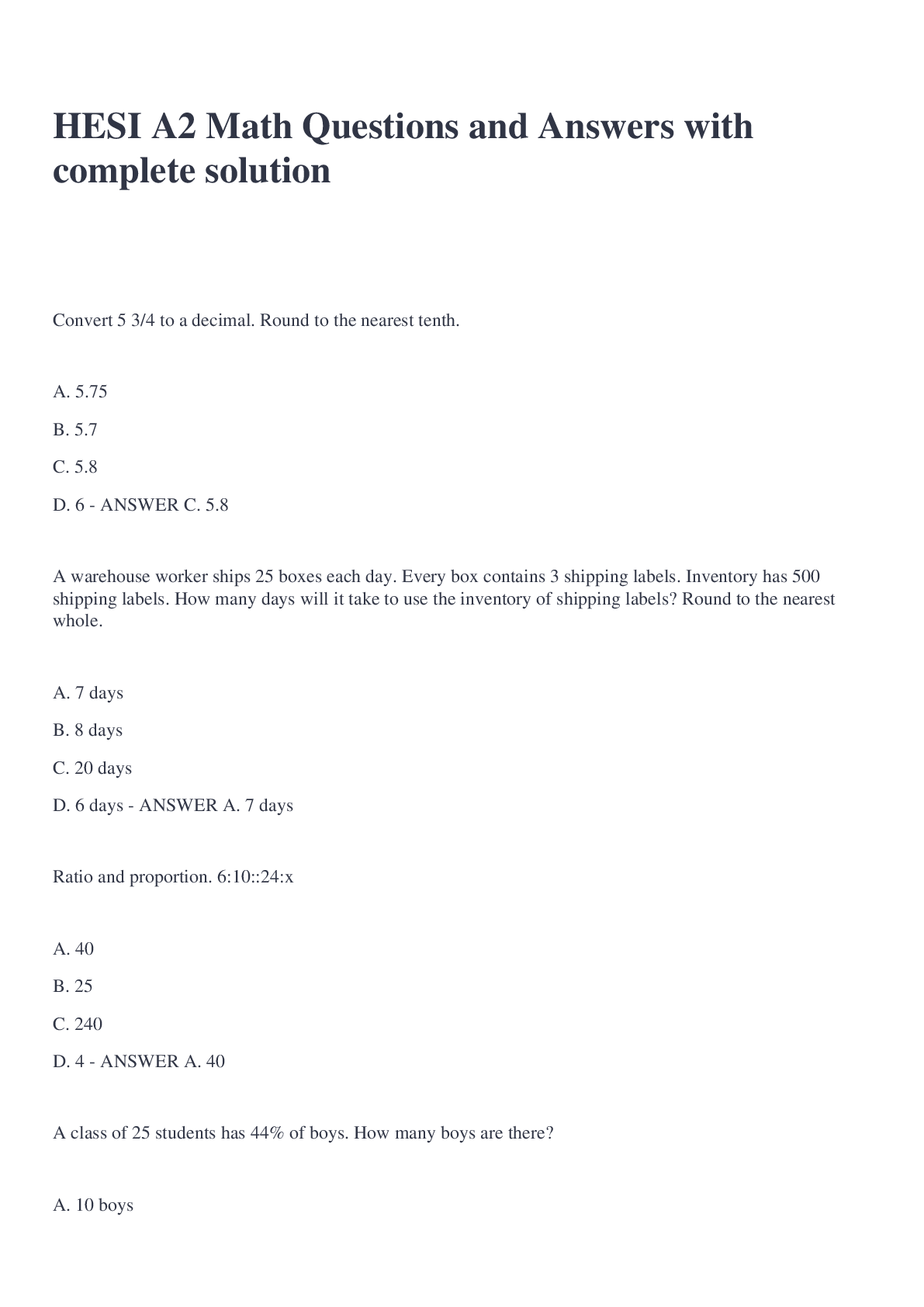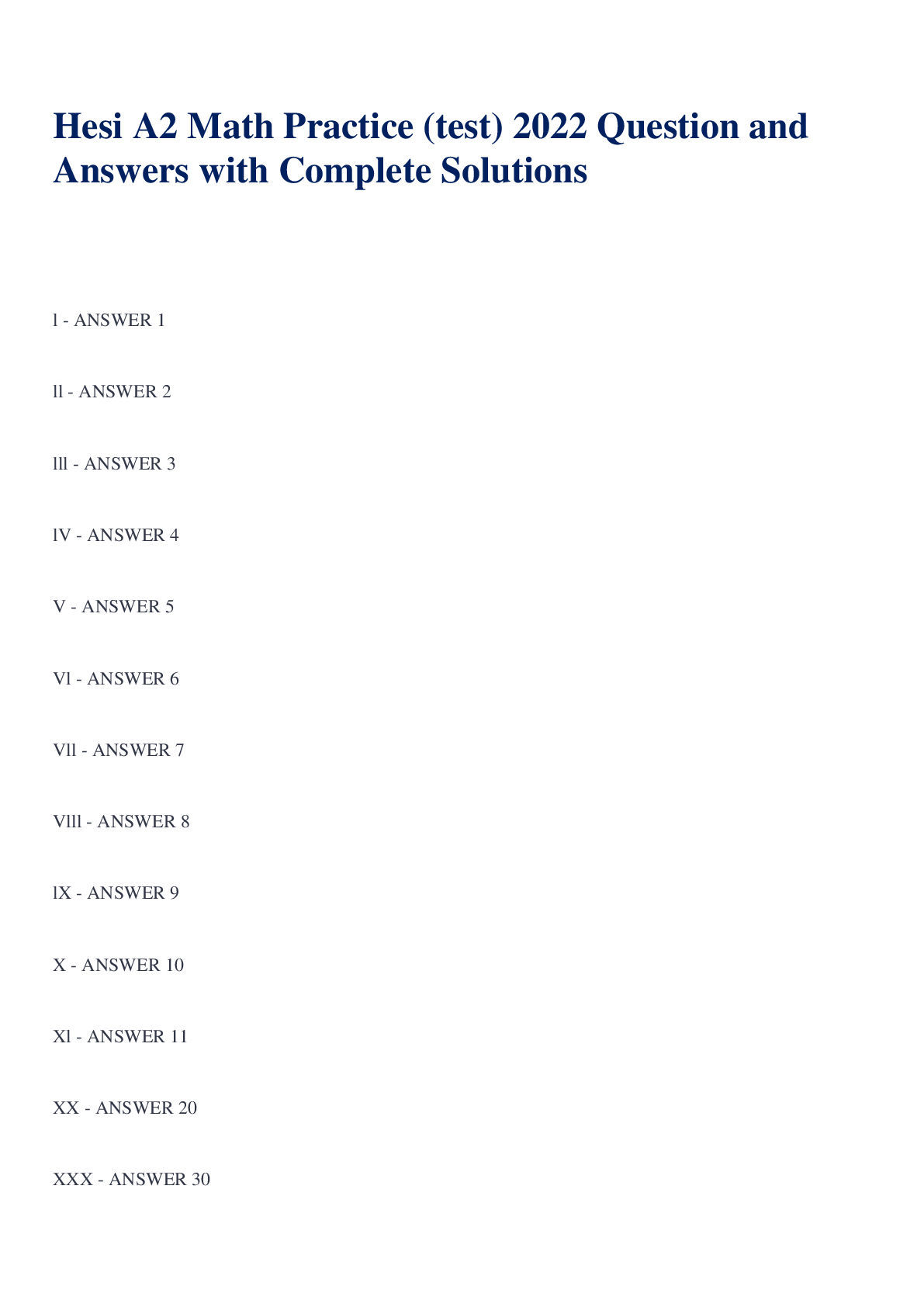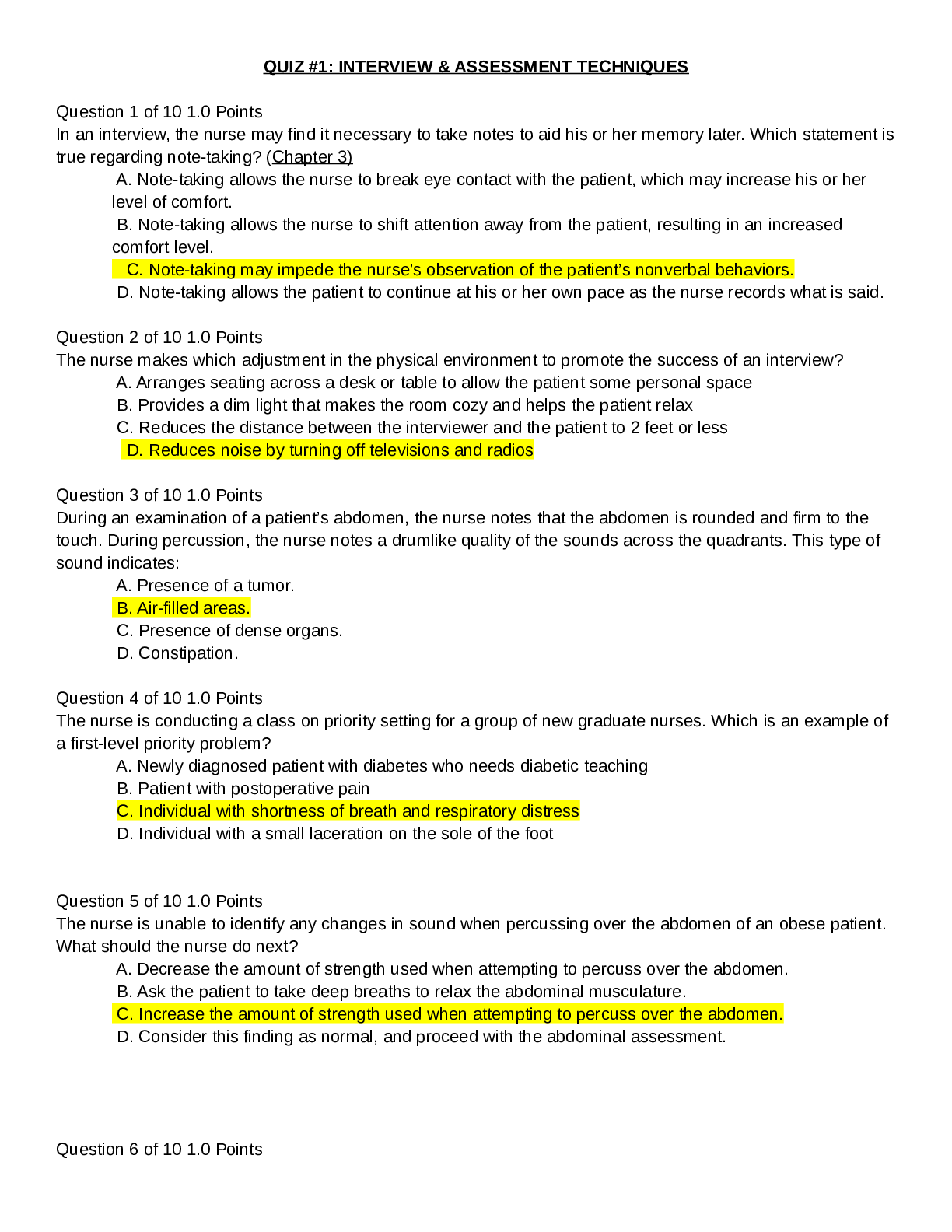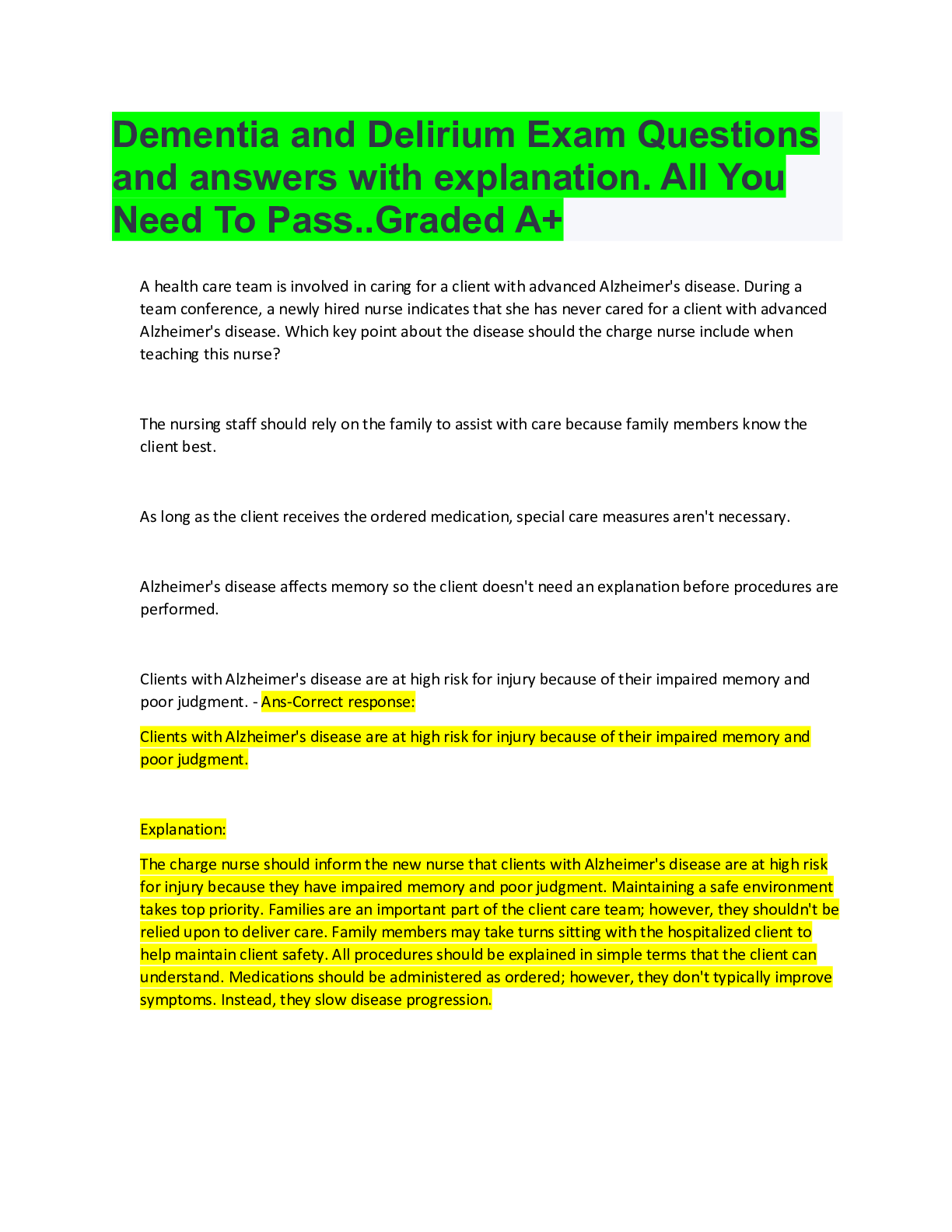HESI Health Assessment | Questions and Answers with Rationale| Latest
Document Content and Description Below
HESI Health Assessment | Questions and Answers with Rationale| Latest 1. The nurse is examining an infant and prepares to elicit the Moro reflex at which time during the examination? A) When th... e infant is sleeping B) At the end of the examination C) Before auscultation of the thorax D) Halfway through the examination Rat: Elicit the Moro or "startle" reflex at the end of the examination because it may cause the infant to cry. 2. A 6-month-old infant has been brought to the well-child clinic for a check-up. She is currently sleeping. What should the nurse do first when beginning the examination? A) Auscultate the lungs and heart while the infant is still sleeping. B) Examine the infant's hips because this procedure is uncomfortable. C) Begin with the assessment of the eye and continue with the remainder of the examination in a head-to-toe approach. D) Wake the infant before beginning any portion of the examination to obtain the most accurate assessment of body systems. Rat: When the infant is quiet or sleeping is an ideal time to assess the cardiac, respiratory, and abdominal systems. Assessment of the eye, ear, nose, and throat are invasive procedures and should be performed at the end of the examination. 3. The nurse is assessing an 80-year-old male patient. Which assessment findings would be considered normal? A) An increase in body weight from younger years B) Additional deposits of fat on the thighs and lower legs C) The presence of kyphosis and flexion in the knees and hips D) A change in overall body proportion, a longer trunk, and shorter extremities Rat: Changes that occur in the aging person include more prominent bony landmarks, decreased body weight (especially in males), a decrease in subcutaneous fat from the face and periphery, and additional fat deposited on the abdomen and hips. Postural changes of kyphosis and slight flexion in the knees and hips also occur. 4. When assessing the force, or strength, of a pulse, the nurse recalls that it: A) is usually recorded on a 0- to 2-point scale. B) demonstrates elasticity of the vessel wall. C) is a reflection of the heart's stroke volume. D) reflects the blood volume in the arteries during diastole. Rat: The heart pumps an amount of blood (the stroke volume) into the aorta. The force flares the arterial walls and generates a pressure wave, which is felt in the periphery as the pulse. 5. When assessing the quality of a patient's pain, the nurse should ask which question? A) "When did the pain start?" B) "Is the pain a stabbing pain?" C) "Is it a sharp pain or dull pain?" D) "What does your pain feel like?" Rat: To assess the quality of a person's pain, have the patient describe the pain in his or her own words. 6. The nurse is providing care for a 68-year-old woman who is complaining of constipation. What concern exists regarding her nutritional status? A) The absorption of nutrients may be impaired. B) The constipation may represent a food allergy. C) She may need emergency surgery for the problem. D) The gastrointestinal problem will increase her caloric demand. Rat: Gastrointestinal symptoms such as vomiting, diarrhea, or constipation may interfere with nutrient intake or absorption. The other responses are not correct. 7. During a nutritional assessment, why is it important for the nurse to ask a patient what medications he or she is taking? A) Certain drugs can affect the metabolism of nutrients. B) The nurse needs to assess the patient for allergic reactions. C) Medications need to be documented on the record for the physician's review. D) Medications can affect one's memory and ability to identify food eaten in the last 24 hours. Rat: Analgesics, antacids, anticonvulsants, antibiotics, diuretics, laxatives, antineoplastic drugs, steroids, and oral contraceptives are drugs that can interact with nutrients, impairing their digestion, absorption, metabolism, or use. The other responses are not correct. 8. The nurse is reviewing the nutritional assessment of an 82-year-old patient. Which of these factors is most likely to affect the nutritional status of an elderly person? [Show More]
Last updated: 1 month ago
Preview 1 out of 57 pages
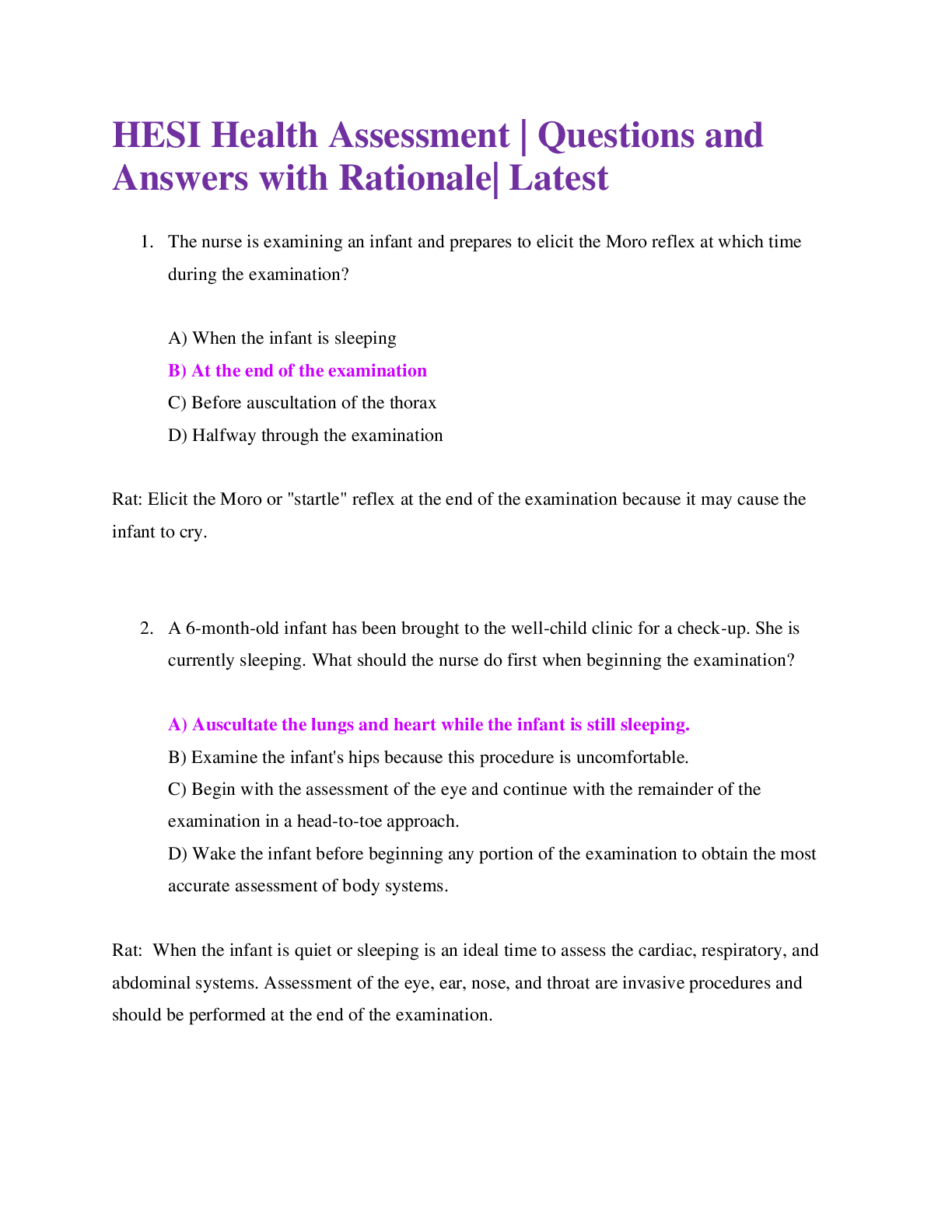
Reviews( 0 )
Document information
Connected school, study & course
About the document
Uploaded On
Jun 10, 2021
Number of pages
57
Written in
Additional information
This document has been written for:
Uploaded
Jun 10, 2021
Downloads
0
Views
82

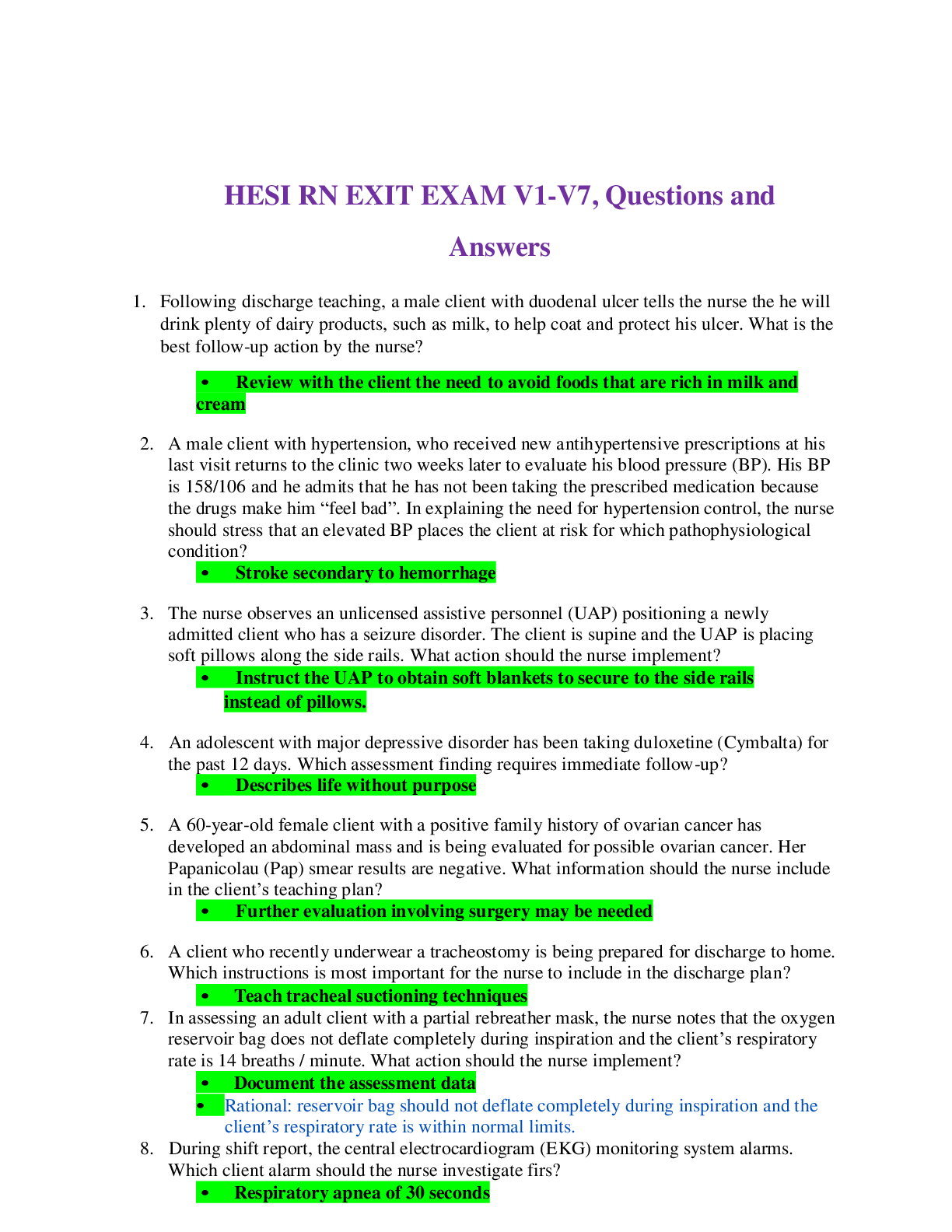
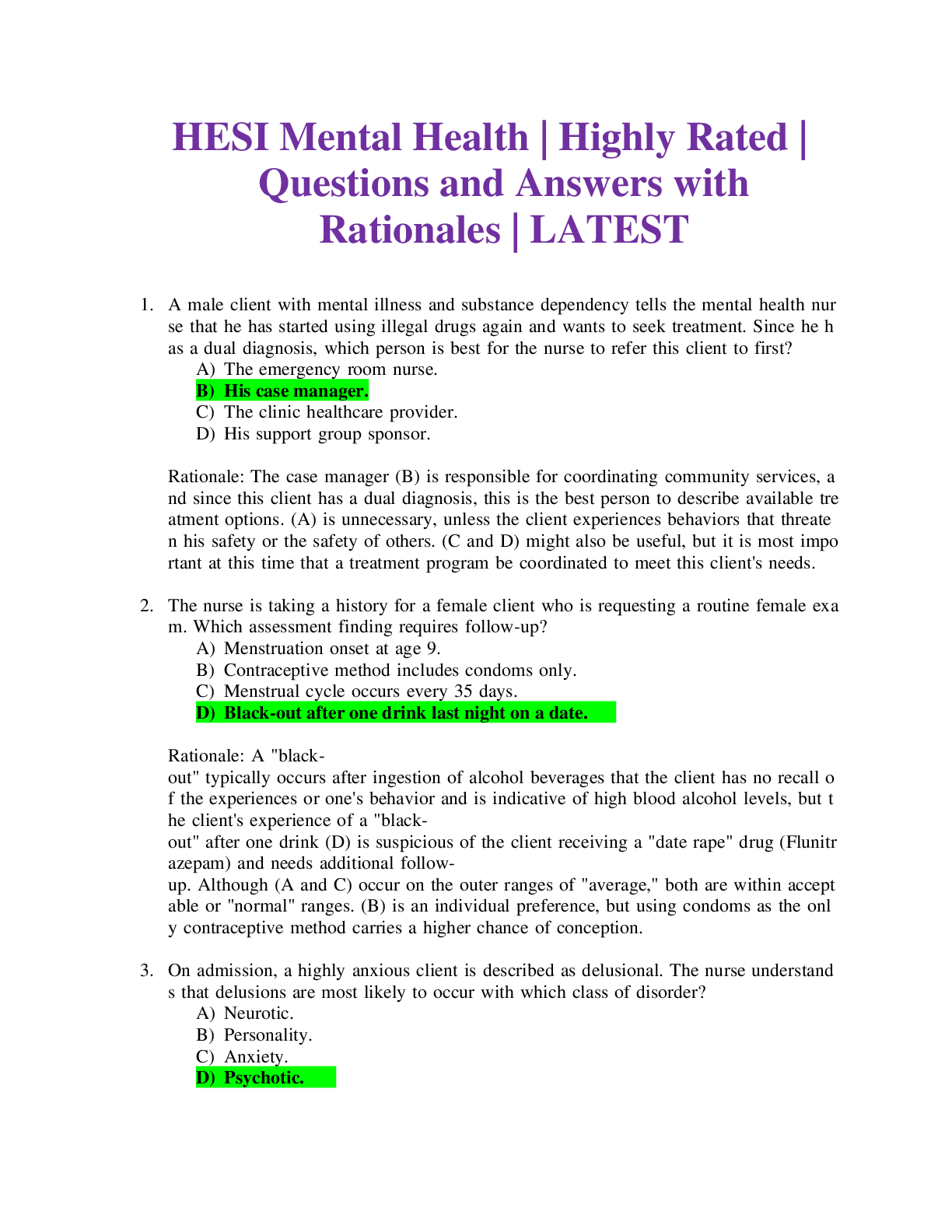

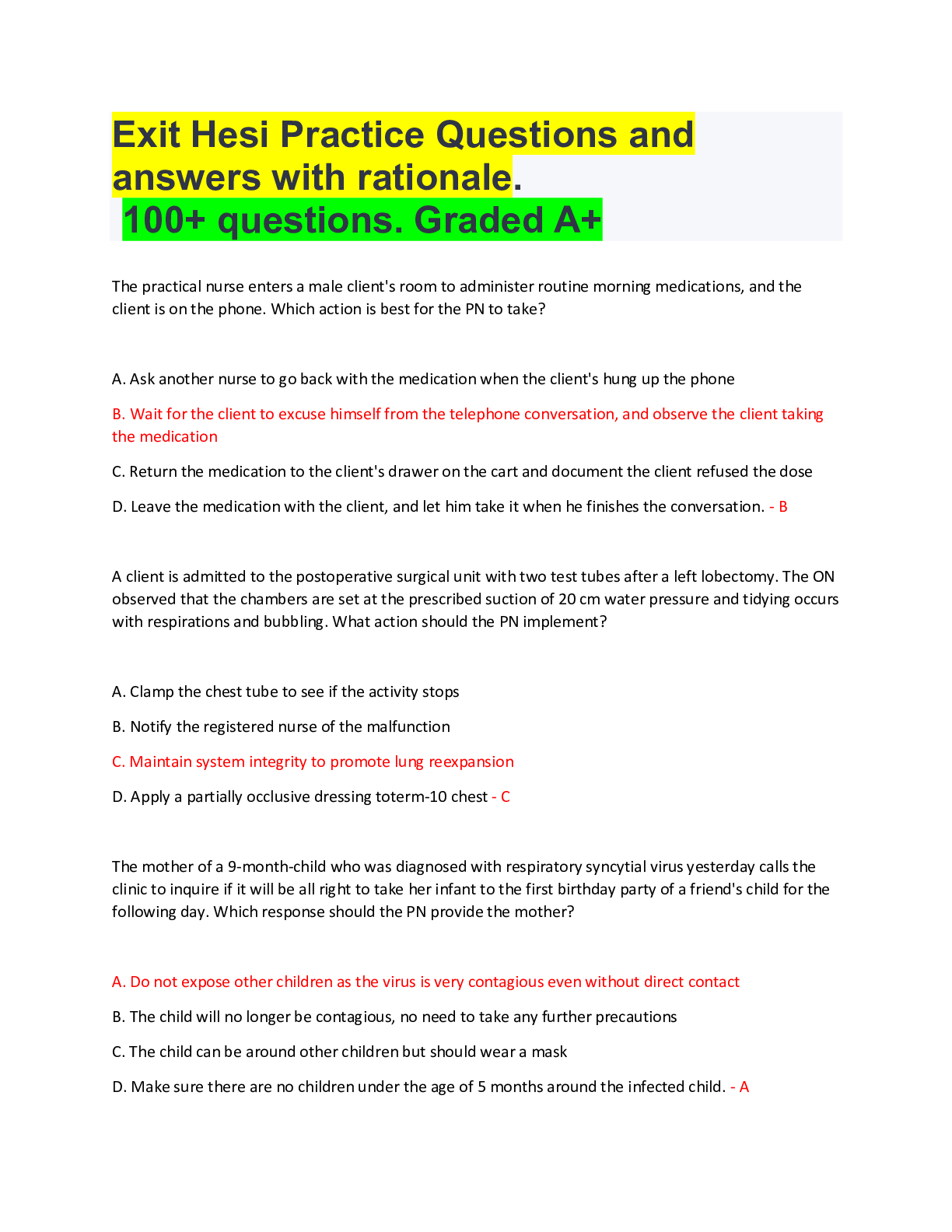
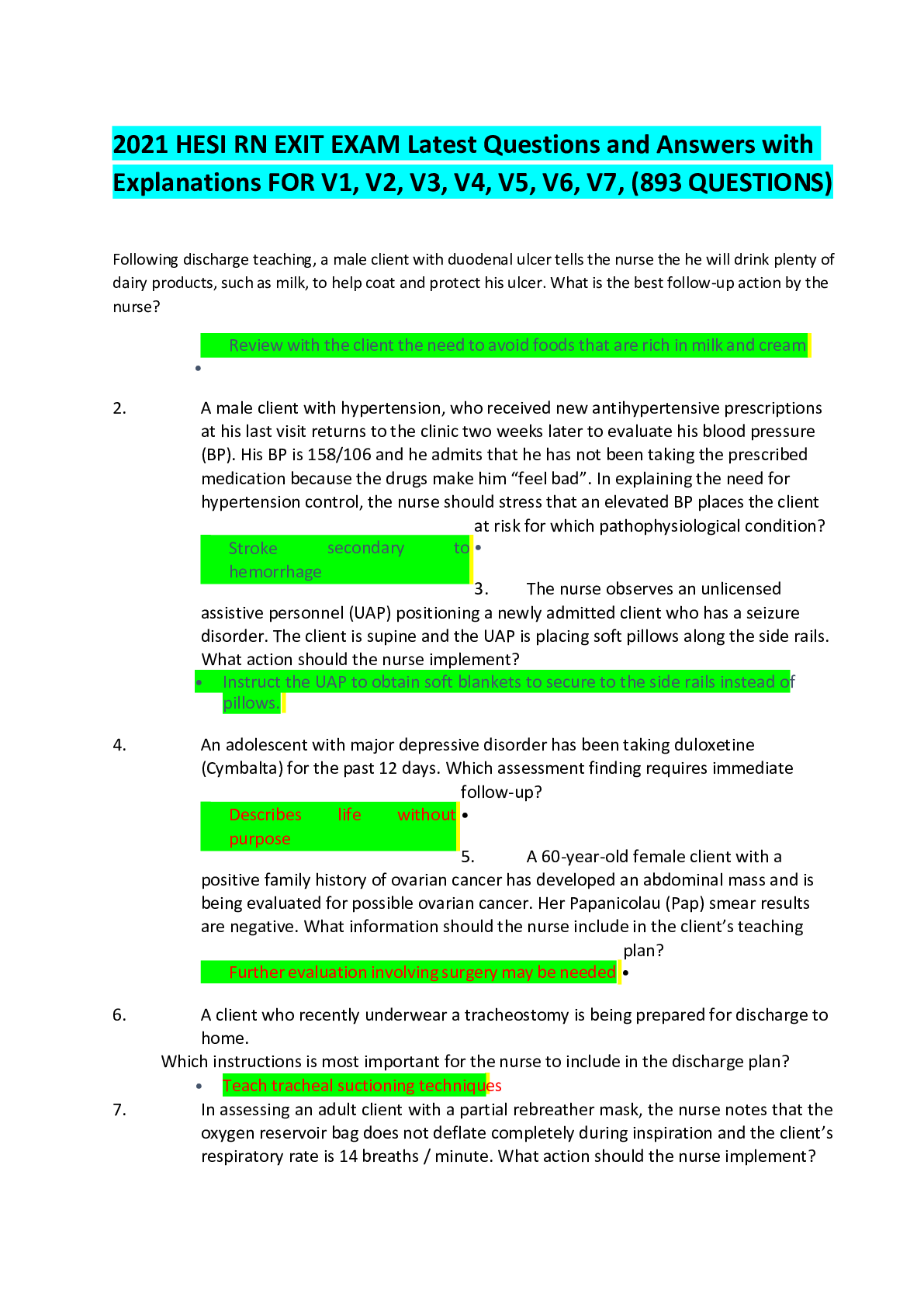
, Latest Questions and Answers with Explanations, All Correct Study Guide, Download to Score A.png)
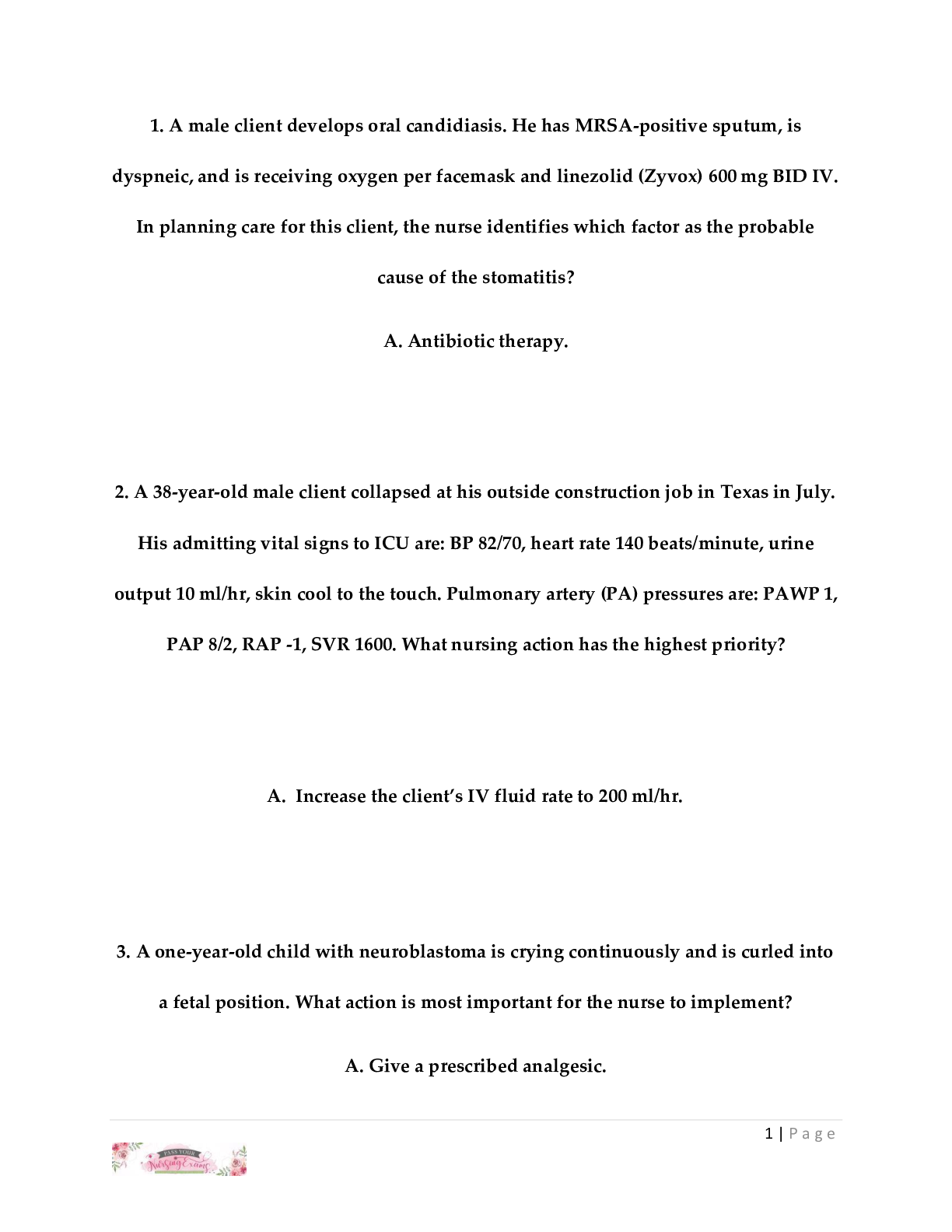
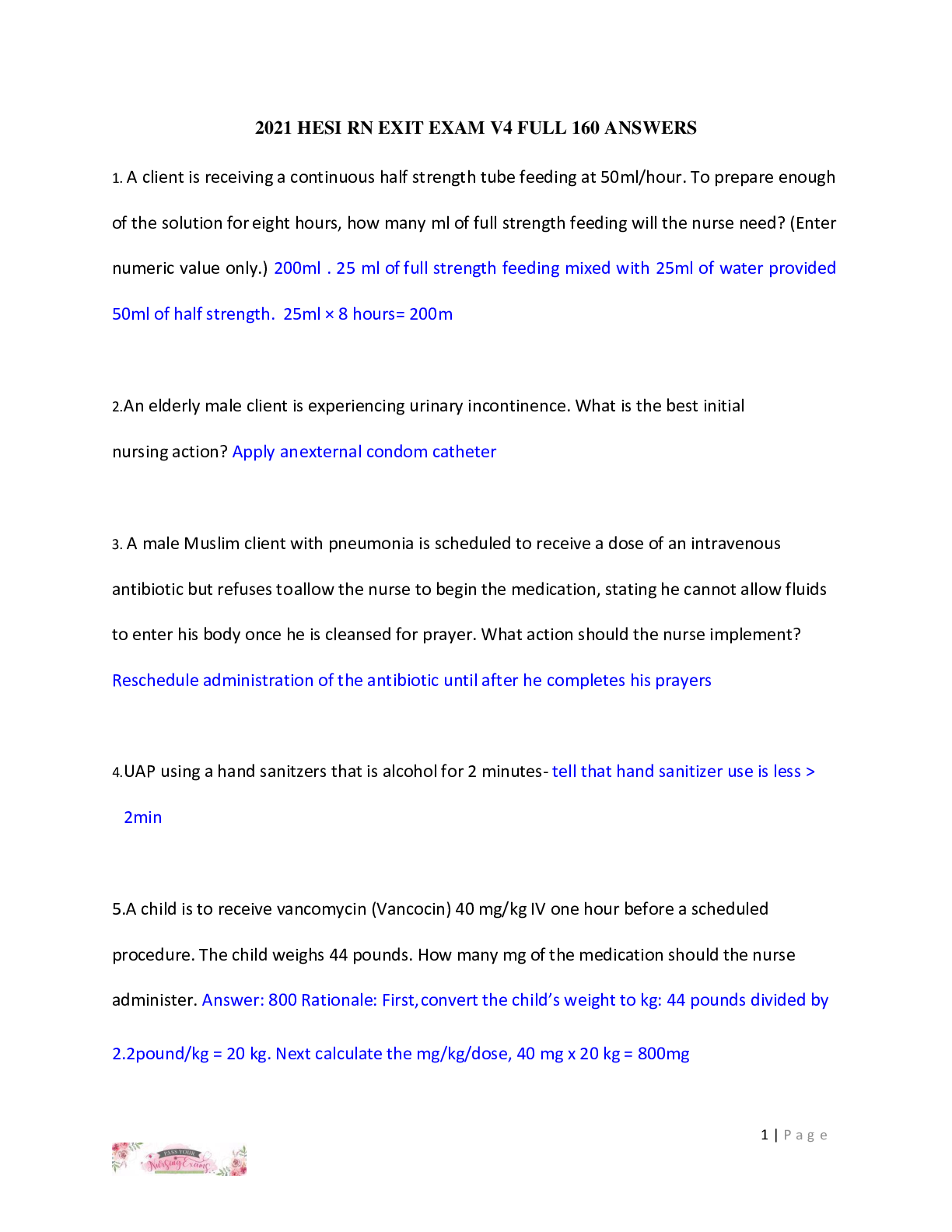

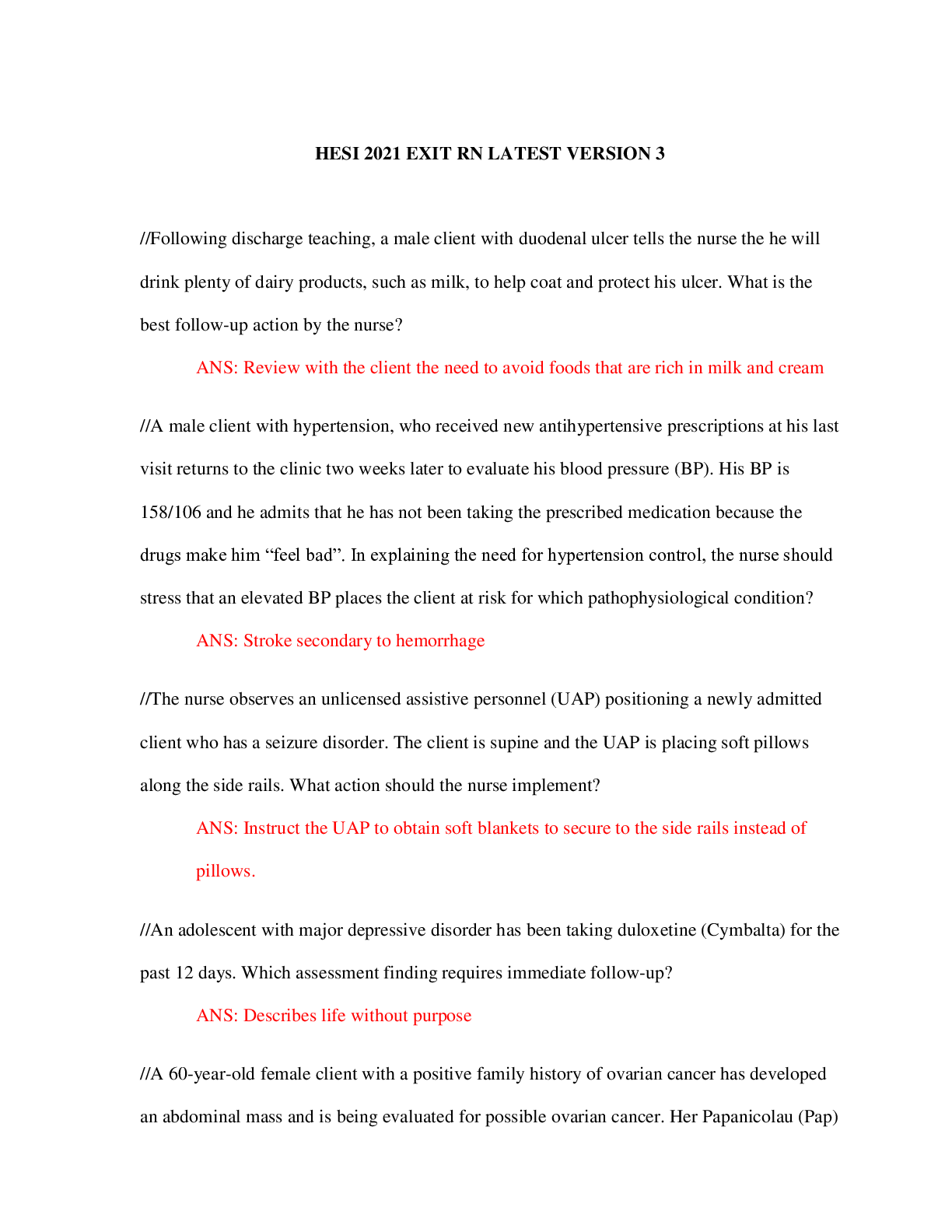
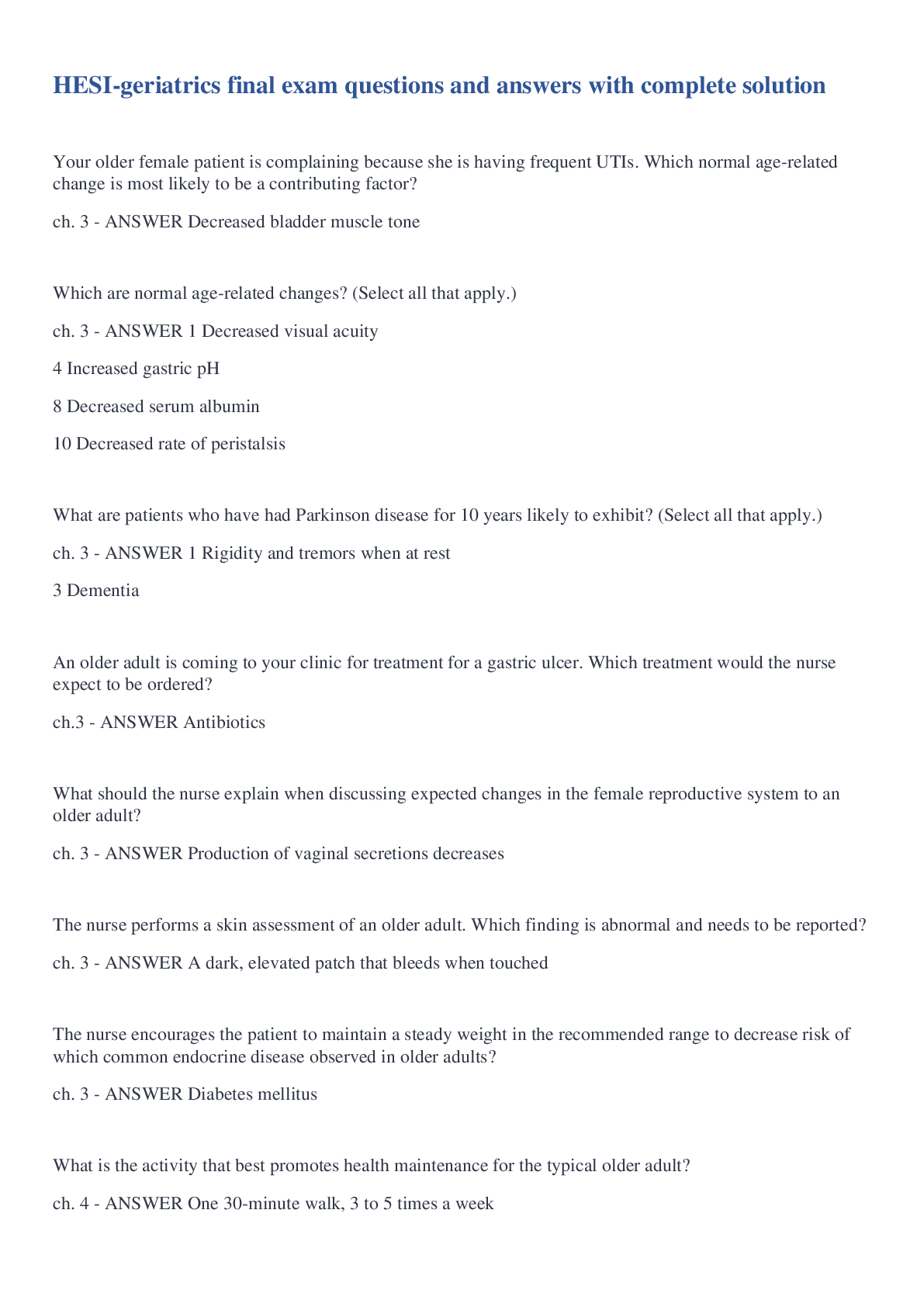
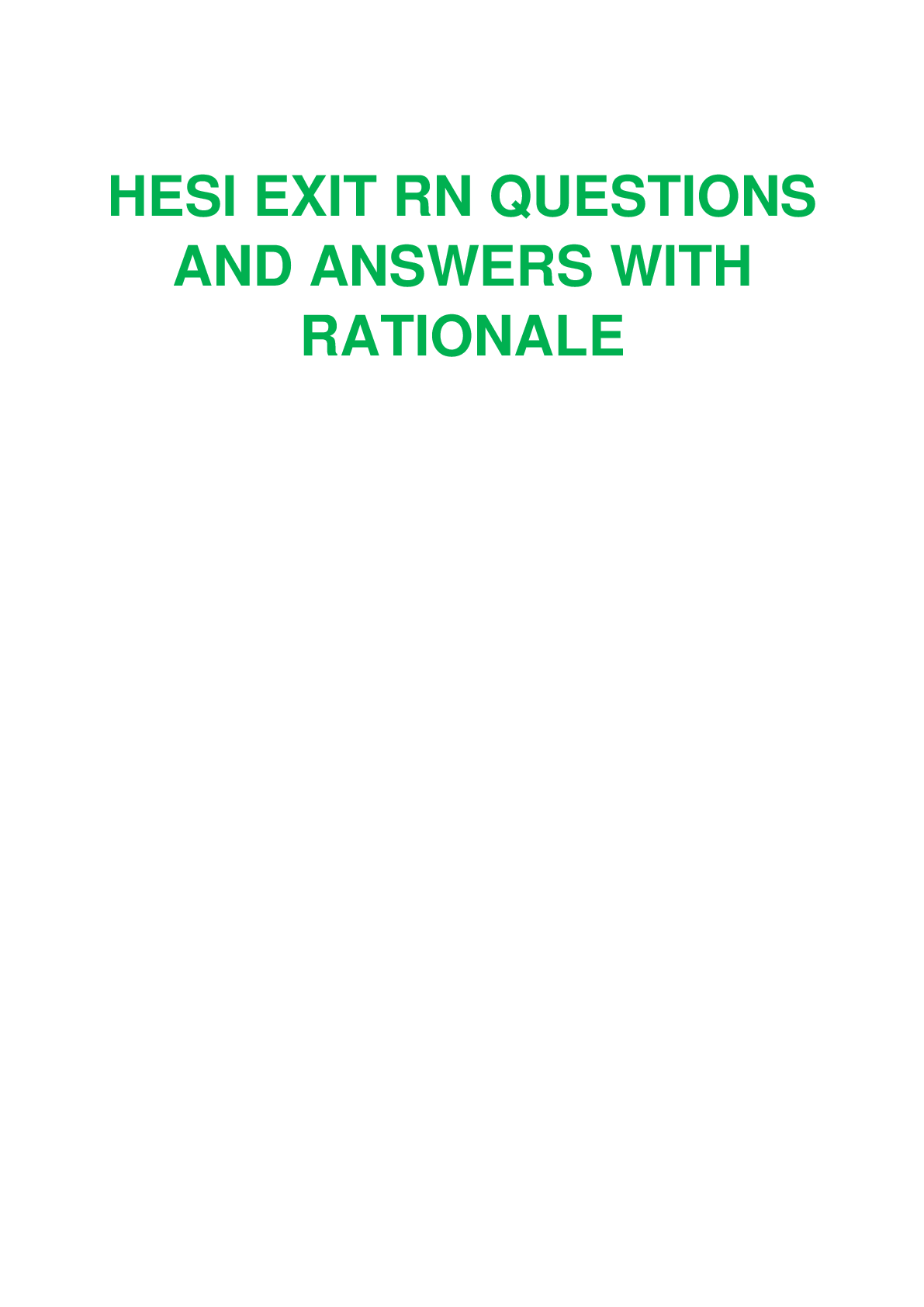
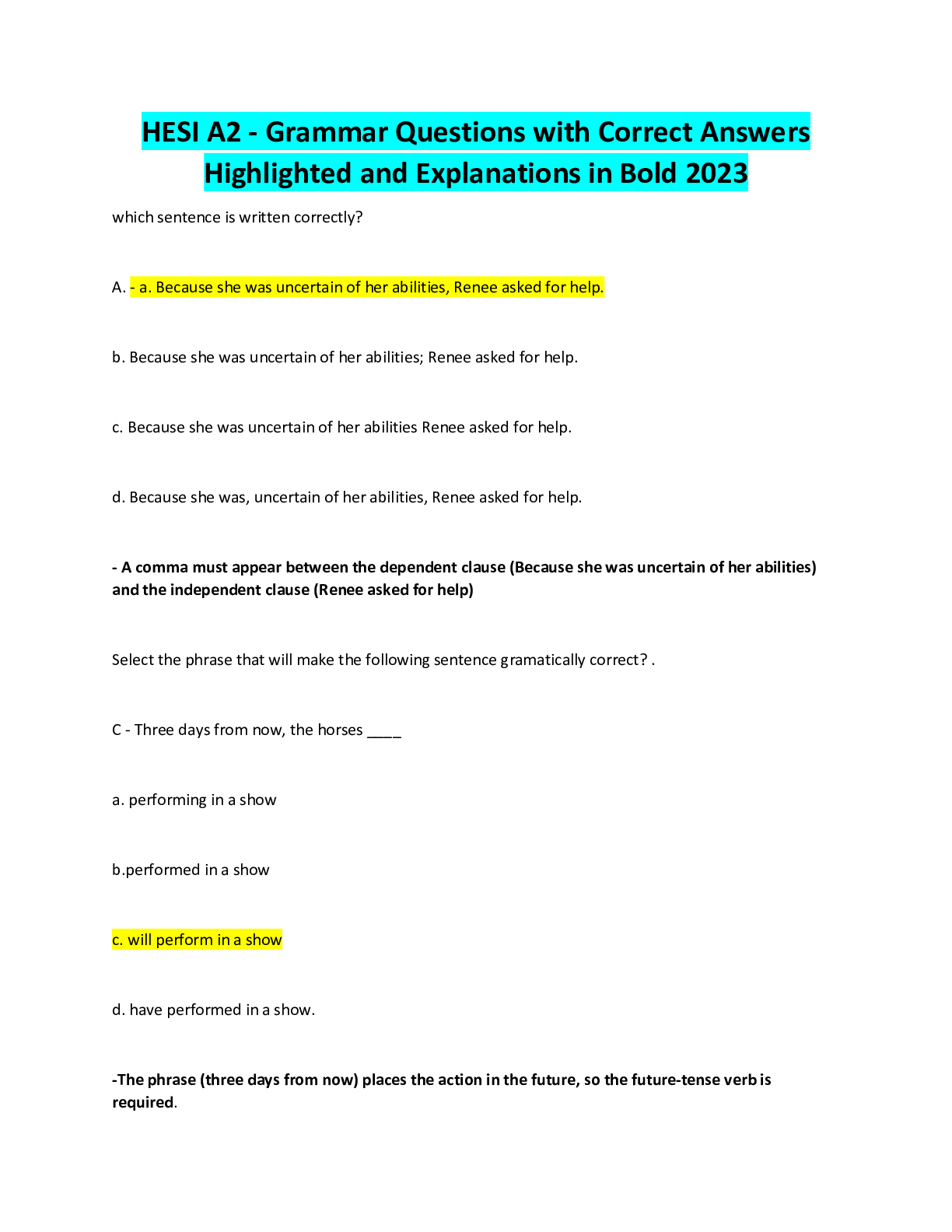
.png)
